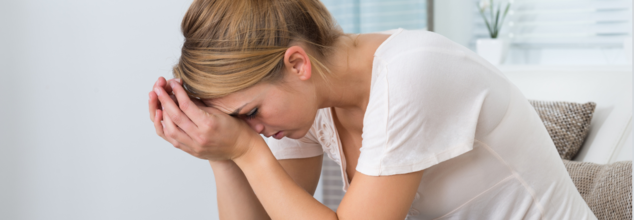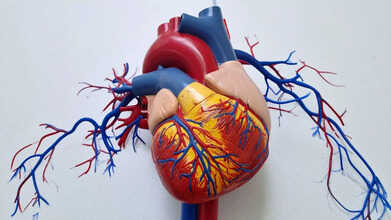- Health Conditions A-Z
- Health & Wellness
- Nutrition
- Fitness
- Health News
- Ayurveda
- Videos
- Medicine A-Z
- Parenting
- Web Stories
Fight, Flight Or Freeze: How Do You Respond To Stress?

Image Credit: Canva
Stress is an unavoidable part of life, and while it often carries a negative connotation, it is actually a fundamental survival mechanism. When faced with a perceived threat, whether physical or emotional, the body instinctively reacts to protect itself. This automatic response is commonly known as the "fight, flight, or freeze" response. While it serves an essential function in dangerous situations, chronic activation of this response due to daily stressors can have significant consequences for mental and physical health.
The body’s response to stress is rooted in human evolution. When our ancestors encountered a predator, their nervous systems immediately prepared them to either confront the threat (fight), escape to safety (flight), or become still and unnoticed (freeze). While modern-day stressors may not include wild animals, our nervous system reacts similarly to job pressures, financial worries, or social conflicts.
According to the Cleveland Clinic, stress is the body's response to change, activating a physiological reaction that helps us adapt and protect ourselves. While short-term stress can be beneficial, prolonged exposure can lead to an overactive stress response, negatively impacting overall well-being.
The Three Stress Responses: Fight, Flight, and Freeze
1. Fight
The fight response prepares the body for direct action. When triggered, the nervous system releases adrenaline, increasing heart rate, blood pressure, and muscle tension. While this reaction once helped early humans fend off predators, today it manifests as irritability, frustration, or aggression.
For instance, the employee who has experienced too much workload may work extremely long hours just to succeed. In short term, the action may produce good results but mostly ends in burnout, anxiety, and physical illness, for example, tension headache or digestion problems.
2. Fight
The flight response triggers an intense need to remove oneself from a stressful situation. Just as our ancestors would flee from danger, modern individuals may avoid conflict, quit jobs impulsively, or detach from relationships when overwhelmed.
Flight mode is linked with restlessness and anxiety. Individuals may have a sense of needing to get up and go-pacing, changing environments constantly, or avoiding tasks that seem too overwhelming. Someone with a flight response might have the desire to change jobs constantly, relocate constantly, or become reclusive in order to avoid perceived dangers.
3. Freeze
The freeze response occurs when the nervous system perceives a threat as too overwhelming to fight or flee. Rather than taking action, individuals shut down, feeling numb, disconnected, or paralyzed by fear.
Unlike fight or flight, which involve heightened activation, freeze mode slows down physiological functions. A person experiencing freeze mode may feel physically unable to move, struggle to make decisions, or find themselves dissociating from their emotions. This can manifest in situations such as public speaking anxiety, where someone might "blank out" or feel stuck in the moment.
What Happens in the Body During A Stressful Event?
When faced with a stressor, the autonomic nervous system (ANS) activates, triggering physiological changes, including:
- Increased heart rate and breathing: The body pumps more oxygen to muscles and the brain in case action is needed.
- Muscle tension: The body prepares for movement, sometimes causing trembling or stiffness.
- Dilated pupils: Vision sharpens to detect potential threats.
- Dry mouth: Saliva production decreases as the body redirects energy to essential functions.
- Changes in skin tone: Blood flow is directed to vital organs, sometimes making the skin appear pale or flushed.
For those experiencing the freeze response, the body undergoes a different reaction, often reducing heart rate and causing physical immobility rather than heightened activation.
Strategies for Coping and Managing the Stress Response
While the stress response is necessary for survival, frequent activation due to daily stressors can take a toll on health. Recognizing your default response—whether fight, flight, or freeze—can help in developing effective coping mechanisms.
1. Moving to a Safe Space
If possible, changing your environment can help signal to your brain that the threat has passed. Stepping outside for fresh air, finding a quiet place, or distancing yourself from overwhelming stimuli can help regulate emotions.
2. Practicing Controlled Breathing
Deep, slow breathing can be used to counteract the stress response by engaging the parasympathetic nervous system, which promotes relaxation. Techniques such as diaphragmatic breathing or the 4-7-8 method (inhale for four seconds, hold for seven, exhale for eight) can be particularly effective in calming the body.
3. Engaging in Physical Activity
This helps release pent-up energy and aids in the endorphin cascade, natural boosters for our mood.
4. Seeking Social Support
Relieving oneself from stress can come in many ways, but sharing it with trusted friends, a family member, or a good therapist will sure give that psychological boost of hope. Social support is an especially effective way of cushioning people against the stressors that they are subjected to in chronic forms.
When to Seek Professional Help
While occasional stress is normal, chronic activation of the fight, flight, or freeze response can indicate underlying mental health concerns, such as anxiety disorders or post-traumatic stress disorder (PTSD). If stress is affecting daily life—leading to sleep disturbances, difficulty concentrating, or persistent feelings of fear—it may be time to consult a mental health professional.
Could Sleeping More Protect Your Heart Better Than Exercise? Here’s What Experts Found

Credits: Canva
You may think that hours at the gym and a carefully balanced diet guarantee a healthy heart. But experts now say that the secret to lasting heart health might be simpler and quieter. New insights suggest that while exercise and nutrition are vital, skipping sleep can quietly undo their benefits. Even the fittest body cannot perform at its best if the heart is constantly deprived of rest.
Why Heart Health Deserves More Attention
The heart works around the clock, beating nearly 100,000 times a day to keep blood flowing through every cell. When it weakens, the entire body begins to suffer. According to the World Health Organization (WHO), cardiovascular diseases are the world’s leading cause of death, responsible for roughly 17.9 million lives lost each year.
High blood pressure, stress, poor diet, and lack of sleep are among the biggest contributors. What’s striking is that most of these risks are preventable through small, consistent lifestyle changes, including better sleep.
What Science and Doctors Are Saying
Dr. Sudhir Kumar, a Hyderabad-based neurologist, recently drew attention online by saying that “regular vigorous exercise cannot offset the negative impact of chronic sleep deprivation.” In a post on X (formerly Twitter), he compared two healthy individuals, one who runs daily but sleeps poorly, and another who sleeps 7–8 hours while walking for only 20 minutes a day. The well-rested individual, he explained, had better heart resilience in the long run.
Exercise strengthens muscles, improves cholesterol, and supports blood pressure regulation. However, sleep deprivation reverses many of these benefits. It increases inflammation, elevates stress hormones, and forces the heart to work harder even at rest. Over time, this strain stiffens arteries and raises the risk of heart disease. Research published in the European Heart Journal found that sleeping fewer than six hours a night can raise cardiovascular risk by up to 40%, regardless of a person’s fitness level.
Sleep: The Body’s Built-In Repair System
As Dr. Kumar explains, sleep is the time when the body heals and restores itself. During deep rest, heart rate slows, blood pressure stabilizes, and tissues repair. Without enough sleep, the body remains in a semi-stressed state, limiting recovery. Hormone levels fluctuate, insulin sensitivity drops, and inflammation rises, all of which make the heart more vulnerable.
The example of someone who sleeps well but exercises moderately shows how balance works better than intensity. A routine that includes seven to eight hours of quality rest and light daily movement, such as brisk walking, can strengthen the heart, improve metabolism, and build lasting resilience.
The Healthier Way Forward
For fitness enthusiasts who thrive on high-intensity workouts, Dr. Kumar advises cutting back slightly to allow enough rest. Just one extra hour of sleep may help the heart recover and function more efficiently. True fitness, he adds, is not about how hard you push but how well you let your body repair itself.
This Unique Symptom Could Mean You Have the Flu, And Not Just A Seasonal Cold

Credits: canva
The NHS has pointed out one main sign that helps tell the flu apart from a regular cold, as experts warn of a “worrying increase” in flu cases across the UK. Reports show that infections are now about three times higher than this period last year, with flu season striking more than a month earlier than expected.
Figures from the UK Health Security Agency (UKHSA) show that positive flu cases jumped from 6.1% to 8.2%, mostly due to a sharp rise among school-aged children, NHS England said. Health officials are now urging people, especially children and vulnerable groups, to get vaccinated as soon as possible.
Here’s what the NHS says can help you tell whether you have the flu or just a seasonal cold.
How To Identify If You Have The Flu Or Just A Normal Cold?
Telling the difference between a cold and the flu can be tricky since their symptoms overlap, but there are a few ways to distinguish them.
According to the NHS, “Cold and flu symptoms are similar, but flu tends to be more severe.” One of the biggest clues that it’s flu and not a cold is if you “feel completely drained and too unwell to go about your day.” A regular cold, on the other hand, usually makes you feel under the weather, but you can still manage your normal activities.
Flu symptoms also tend to appear suddenly, often within a few hours, while a cold develops more slowly. Unlike a cold, which mostly affects the nose and throat, flu impacts the entire body.
The NHS lists the main symptoms of flu as:
- A sudden high temperature
- An aching body
- Extreme tiredness or exhaustion
- A dry cough
- A sore throat
- Headache
- Trouble sleeping
- Loss of appetite
- Stomach pain or diarrhoea
- Feeling sick or vomiting
What To Do If You Have Flu?
If you have flu, the NHS advises staying at home and avoiding contact with others, especially if you have a high temperature or are too unwell to carry on with normal tasks. To help prevent spreading the virus, you should:
- Wash your hands often with warm water and soap
- Cover your mouth and nose with a tissue when you cough or sneeze (if you don’t have one, use your elbow instead of your hands)
- Dispose of used tissues right away
Since flu viruses change every year, getting vaccinated annually is the best way to stay protected and reduce the risk of passing it to others. Vaccines are safe, effective, and one of the strongest defences against seasonal illness. Health officials urge everyone who is eligible to get their flu jab soon, with convenient appointments and local walk-in options now available.
Eligibility For The Flu Vaccine In UK
In the UK, the NHS offers free flu vaccinations to several groups, including people aged 65 and above, those with specific chronic health conditions, pregnant women, and caregivers. Children aged 2 to 3, as well as all children up to age 11 who fall into clinical risk categories, are also eligible. Meanwhile, children aged 4 to 17 in these risk groups can receive their flu shots at school or through their general practitioner, according to the NHS.
Could Long-Term Melatonin Use Be Silently Harming Your Heart? Here’s What Experts Say

Credits: CANVA
Melatonin and heart failure: Long-term use of melatonin, a popular over-the-counter sleep supplement, has been linked to a higher risk of heart failure and early death in adults with insomnia, according to new research published on Monday.
While the findings don’t show that melatonin directly causes heart problems, experts suggest that the need to rely on it regularly to fall or stay asleep could point to hidden heart-related issues.
What Is Melatonin?
Melatonin is a naturally occurring hormone that plays a key role in regulating sleep. Often called the body’s “sleep hormone,” it helps control the circadian rhythm, which is the internal clock that tells us when to sleep and wake up. The pineal gland in the brain produces melatonin, but many people now turn to melatonin supplements to improve sleep quality.
According to the Cleveland Clinic, these supplements are often marketed for managing insomnia or jet lag. While melatonin can help set a natural sleep cycle, it is not meant to diagnose, treat, or prevent any medical condition. In several countries, including the United States, it is available over the counter without a prescription.
Can Melatonin Lead To Heart Issues?
As over-the-counter supplements are not strictly regulated, melatonin products can vary widely in their concentration and purity. This inconsistency may contribute to different long-term effects on the body.
To assess the potential risks, researchers examined health data from more than 130,000 adults diagnosed with insomnia who had used melatonin for at least a year. They compared these individuals with others who also had insomnia but did not take the supplement.
The results were concerning. People who used melatonin for 12 months or longer showed about a 90 percent higher risk of heart failure over a five-year period than those who did not.
“Melatonin supplements are widely considered a safe and ‘natural’ solution for better sleep, so it was striking to see such strong links to serious health outcomes even after accounting for other risk factors,” said study author Ekenedilichukwu Nnadi, as quoted by The Independent.
Heart failure occurs when the heart cannot pump enough oxygen-rich blood to meet the body’s needs, which can be life-threatening. The study also observed a similar rise in heart failure risk among people who had at least two melatonin prescriptions filled 90 days apart. In fact, melatonin users were found to be 3.5 times more likely to be hospitalised for heart failure compared to non-users, according to the research, which was presented at the American Heart Association’s 2025 Heart Disease and Stroke Statistics meeting but has not yet been peer-reviewed.
So, Is Melatonin Safe To Consume?
To understand the implications, we spoke with Dr. Khushboo Hatekar, Assistant Professor of Neurology at Dr. D.Y. Patil Medical College, Hospital and Research Centre, Pimpri, Pune. She explained that long-term dependence on melatonin often points to underlying conditions such as cardiovascular stress caused by chronic insomnia.
“Insomnia itself raises blood pressure, stress hormones, and inflammation, all of which strain the heart. So, prolonged melatonin use may serve as a signal of hidden heart issues rather than being the direct cause,” she said.
Dr. Hatekar also cautioned against taking melatonin regularly without medical supervision. “Most guidelines recommend melatonin for short-term use, mainly for jet lag or specific sleep disorders,” she added. However, current evidence highlights the need for more detailed clinical studies to determine whether extended use poses a cardiovascular risk.
While short-term use of melatonin appears safe for most people, taking it continuously for a year or longer may increase the likelihood of heart failure and related complications. Both patients and doctors should carefully weigh the benefits and monitor heart health if the supplement is used over an extended period.
© 2024 Bennett, Coleman & Company Limited

